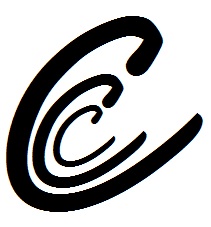Content.
Is.
King!
We’ve all heard how crucial – royal, indeed – content is to building a strong web presence, especially across social media, so I won’t retread the same old ground on that subject.
Rather, I’d like to zoom in on the preparation and execution of that content, in order to improve its allure for newbie and longstanding visitors alike.
8 Tips To Tailor Your Content
Here are eight tips to tailor your content for a more in depth, satisfying read that elicits return value for your audience:
- Prep your subject matter early, then revisit - Don’t just jump into an idea as you start writing the final post; note it down, expand upon it by brain storming or reading around the subect and adding to your own thoughts. Then leave it and come back when you’re ready to write. Do this for multiple subjects as you prep and you can line up a number of articles in one sitting. This Social Media Examiner article has excellent practical tips for this purpose.
- Define a take-away point for readers before you write – As with brain storming the subject, having a final summary thought that you want your audience to take from you article is key. It not only makes your content more memorable (and likely to be shared) but it helps to guide your final writing, keeping it on point of the final message.
- “Make it simple. Make it memorable. Make it inviting to look at. Make it fun to read.” – Okay, that’s four tips in one point… just call it value for your attention. Leo Burnett, an early advertising pioneer, had this to say at the start of the 1900′s and it rings just as true about your content today. Don’t over-complicate the topic and send people off confused, looking for a more understandable source to inform them. Even subjects that are inherently complex can be kept simple to read, assuming a certain level of existing knowledge within your audience. Someone writing about website coding, for example, can reasonably expect their audience to understand the basics if they search for an article on detailed programming. Simplicity also extends into the following concepts of good formatting and entertaining writing, as you won’t get too bogged down in difficult language or detail.
- Vary tone and type - Keep your audience coming back for more by alternating the types of content you post. A series of dry, technical posts, for example, could get monotonous and would benefit from being broken up by something more light-hearted like a poll or amusing takes on your specialist subject. Whether it’s something you create or simply sharing the work of someone else, be sure to offer your readers a variety of content to keep them engaged.
- Involve and engage your reader – Although you’re creating the content, using it to connect to readers across social media is a two way street. Find ways to make your articles interactive, by asking questions through the post and at the end for example, encouraging readers to reflect on their own perspective on the subject matter. You could also ask for links to other articles they’ve read or content they themselves have created, increasing the collaborative nature of your work and making links back to it more likely. Another technique is to leave ideas open-ended, prompting free discussion in your comments sections.
- Find your voice – This may take a number of posts but the more you write your own content, the more your ‘voice’ – your unique combination of style and passion for your subject – will shine through. Solicit plenty of feedback from family, friends, and colleagues of varied personalities to better understand how your content is received. Don’t force it too much, but think about your target audience and how best you can adapt your voice to keep them entertained and informed.
- Write first, keyword later – Although your content will naturally gravitate towards certain keywords and phrases of your subject, avoid getting bogged down with the need to include these terms initially. This will only interrupt your flow and make the task longer. Instead, return to your final draft once you’re finished and put on your search engine optimization (SEO) hat. With a list of your keywords (usually already compiled if you have a website) in hand, aim to sprinkle those that are appropriate equally around 10-15% of the content. More on this aspect to come here in future posts (see next point!)
- Follow up – Rather than simply posting your content and wishing it bon voyage, return regularly to review/reply to comments and add further thoughts or links on the subject. Chris Brogan’s “oldie but a goodie” article on 40 Ways to Deliver Killer Blog Content provides some helpful pointers for this in the ‘Encore’ section.
So in essence this boils down to preparing your topics before you dive into the content creation stage, having a clear direction in mind as you create it, using your own passion to make the subject matter memorable and engaging, and finally checking back to further the conversation surrounding what you have created.
Master these crucial areas and everything else will begin to fall into place. Happy creating!
Have you been able to establish an effective routine for creating your content?
What tips would you offer others just starting out?








 Tools
Tools
Connections